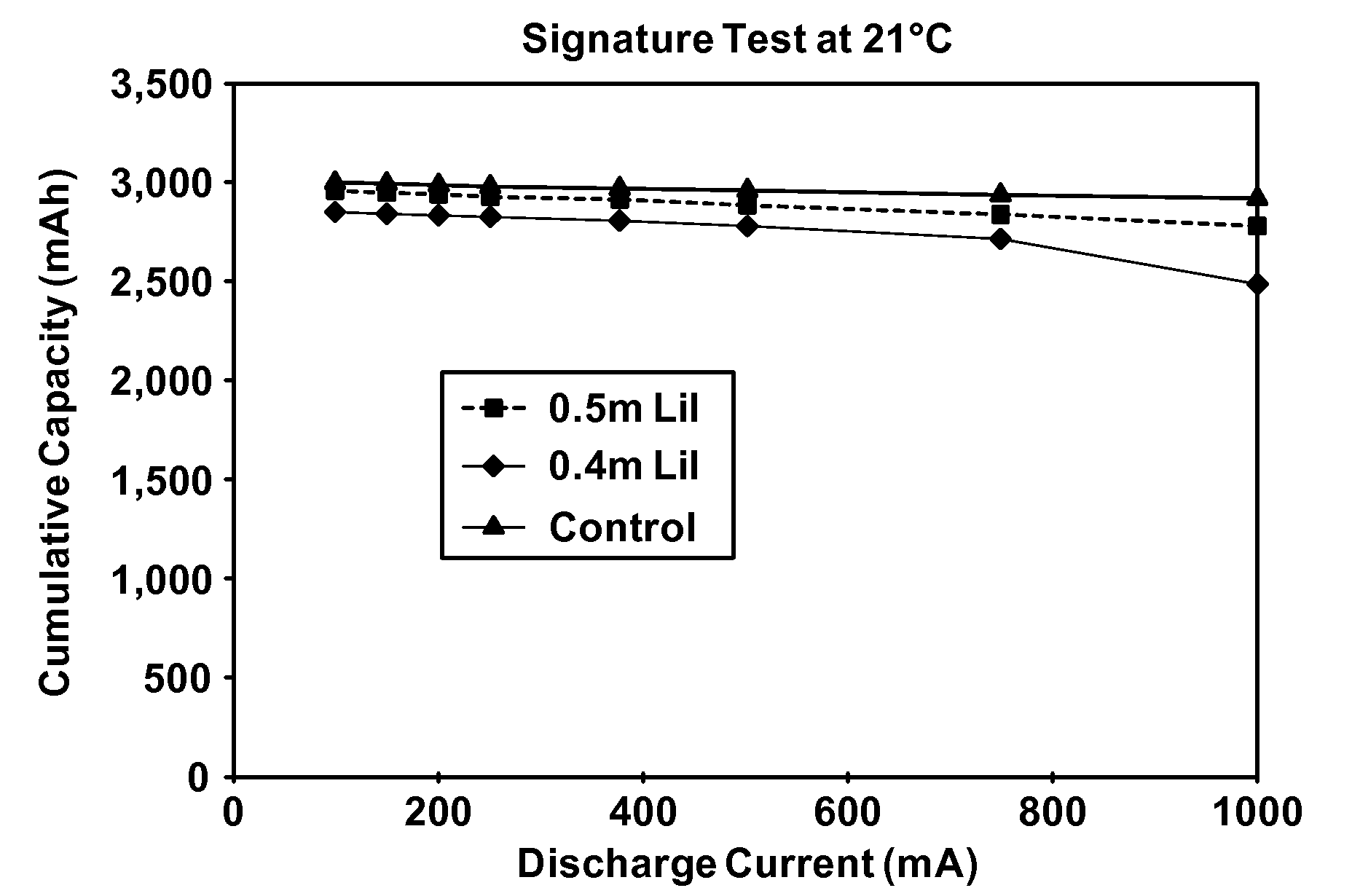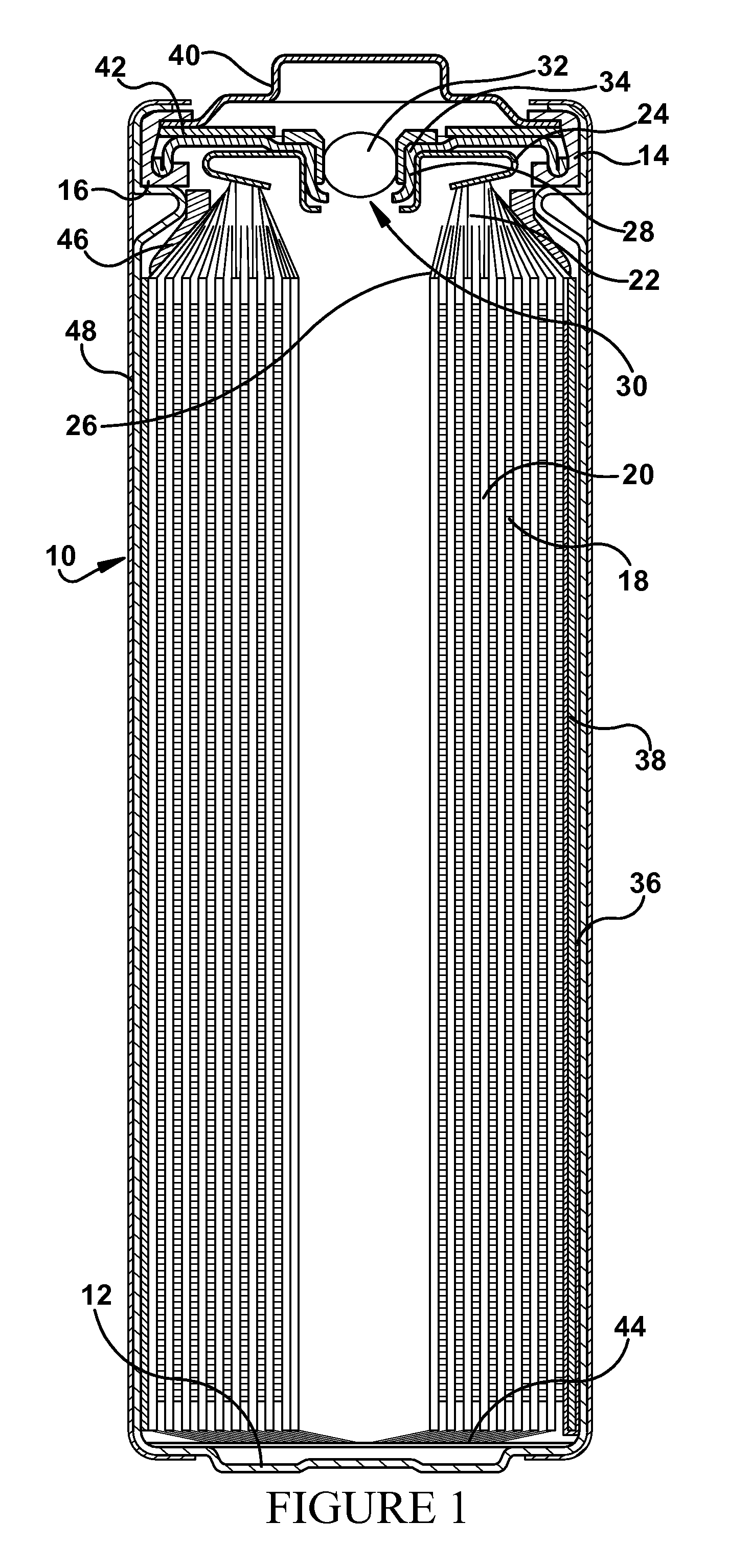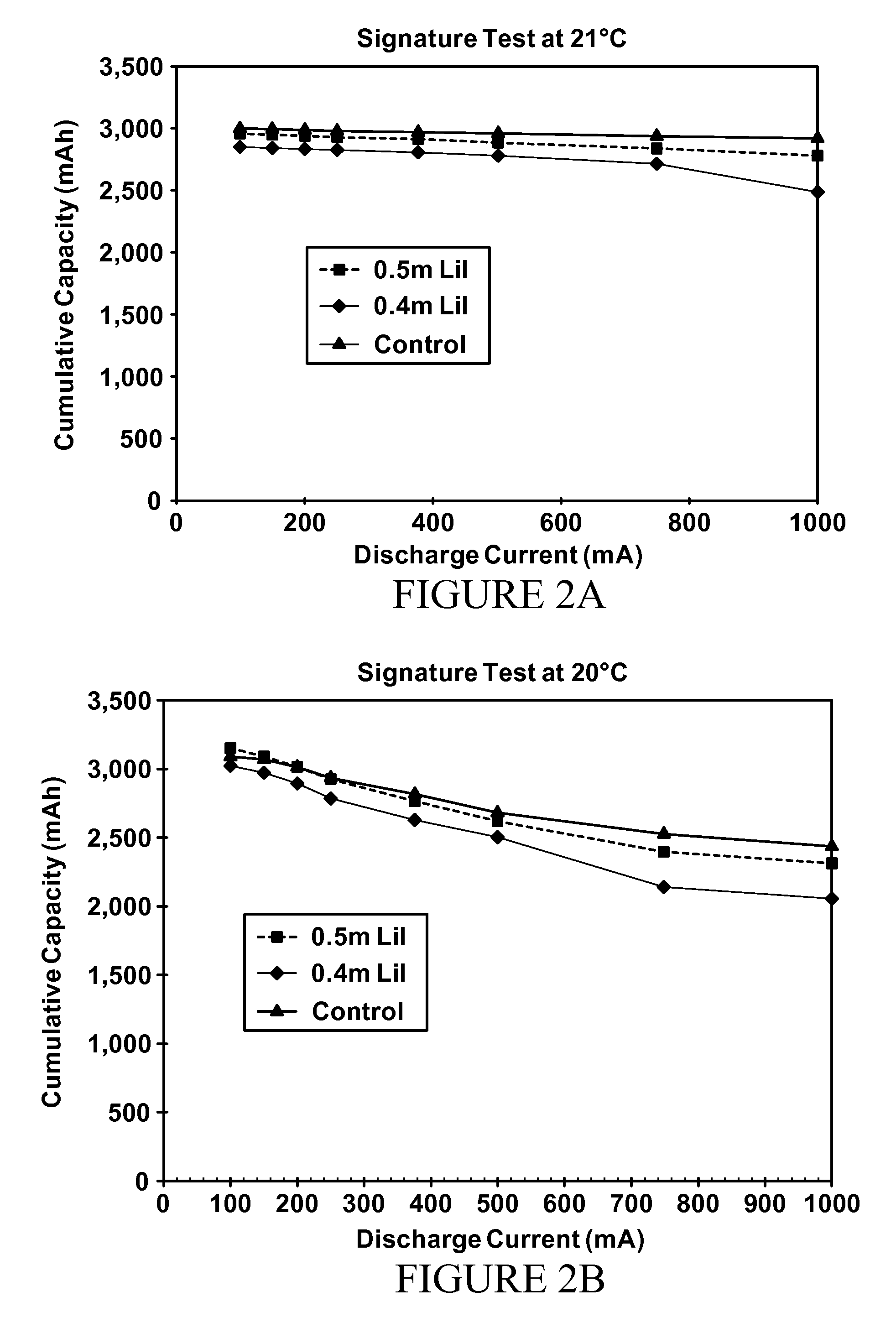All-temperature LiFeS2 battery with ether and low concentration LiI electrolyte
a technology of lii electrolyte and ether, which is applied in the direction of batteries, non-aqueous electrolyte cells, cell components, etc., can solve the problems of low electrical conductivity, difficult selection of an appropriate electrolyte system, and difficult prediction of ideal electrolyte solvent blends and the resulting discharge performance of the cell, etc., to achieve the effect of improving low temperature performan
- Summary
- Abstract
- Description
- Claims
- Application Information
AI Technical Summary
Benefits of technology
Problems solved by technology
Method used
Image
Examples
example 1
[0073]A series of LiFeS2 cells were constructed according to the design depicted in FIG. 1 and the preferred materials described above. Polypropylene gaskets were used. The solvent blend was 65 vol. % DIOX, 35 vol. % DME and 0.2 vol. % DMI. Only the concentration and composition of solute provided to these cells was varied, as described in the tables and further examples below.
[0074]Four different solutes were studied: lithium iodide, lithium imide, lithium perchlorate and lithium triflate. Cell lots for each solute were formulated at four different concentration levels using the criteria set forth above. These cells were then discharged at a variety of different temperatures, as set forth in Table 1 below. The cells using LiClO4 were not tested at 21° C., but typically such cells give comparable performance to equivalent electrolytes using LiI at that temperature.
[0075]
TABLE 11A Continuous Drain at Varying Temperatures and Concentrations.(mAh to 0.9 V cut)SoluteMolality−40° C−20° C...
example 2
[0077]Given the results of Example 1, lithium imide electrolytes were compared against lithium iodide to test the electrolyte's ability to withstand long term storage and storage at elevated temperatures. It is believed storage at elevated temperatures accelerates and simulates the effects of long term storage at room temperature. Notably, cells must display only a minimal rise in its impedance and OCV, while maintaining acceptable flash amperage, in order to provide adequate long term storage.
[0078]Cells were made according to Example 1 above, but focusing on lithium imide electrolyte formulations, which are still benchmarked against lithium iodide, whose viability for long term storage is already well known / established (FR6 cells with lithium iodide have a shelf life of at least 10-15 years). The cells of this Example 2 were then stored at 60° C. for 6 weeks, while being periodically checked for OCV, impedance and flash amperage, as set forth in Table 2 below.
[0079]
TABLE 2Comparis...
example 3
[0083]A further study of low concentrations of lithium iodide was conducted across the range of temperatures to confirm both the benefits achieved at low temperature and the level of service provided at ambient temperatures. Accordingly, cells were made according to Example 1 above at 0.40 molal, 0.50 molal and 0.75 molal LiI concentrations, with the results shown for various temperatures in FIGS. 2A, 2B, 2C and 2D. Note that “DSC” in FIG. 2D refers to the ANSI digital still camera test, an intermittent pulsing drain rate test. The “Signature Test” in FIGS. 2A, 2B and 2C refers to a sequential continuous drain rate test where the cell is progressively discharged to a predetermined cutoff voltage, then retested at a lower drain rate after a rest period. In each of FIGS. 2A, 2B, 2C and 2D, the “control” electrolyte is a 0.75 m LiI formulation and virtually all electrolytes in these Figures used a solvent blend identical to the blend of Example 1.
[0084]Note that the room temperature (2...
PUM
| Property | Measurement | Unit |
|---|---|---|
| temperature | aaaaa | aaaaa |
| temperature | aaaaa | aaaaa |
| volume percent | aaaaa | aaaaa |
Abstract
Description
Claims
Application Information
 Login to View More
Login to View More - R&D
- Intellectual Property
- Life Sciences
- Materials
- Tech Scout
- Unparalleled Data Quality
- Higher Quality Content
- 60% Fewer Hallucinations
Browse by: Latest US Patents, China's latest patents, Technical Efficacy Thesaurus, Application Domain, Technology Topic, Popular Technical Reports.
© 2025 PatSnap. All rights reserved.Legal|Privacy policy|Modern Slavery Act Transparency Statement|Sitemap|About US| Contact US: help@patsnap.com



